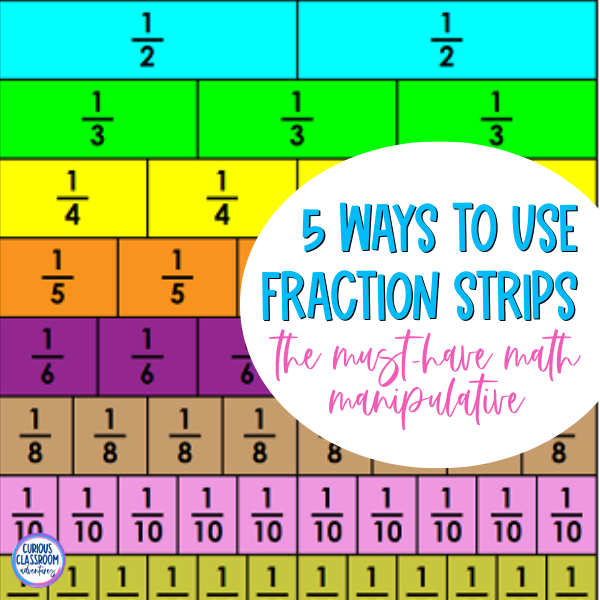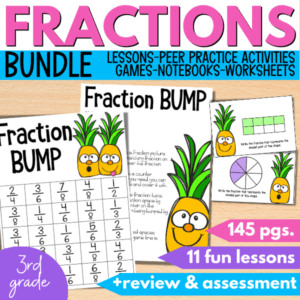Fraction strips are one of those must-have math manipulatives that every classroom should have, as they can help make abstract fractions more tangible and comprehensible for students. These little pieces of colored paper can be used in a multitude of ways to help students understand everything from basic fractions to complex fraction operations. They are by far my favorite math manipulatives! In this blog post, I will share different ways that you can use fraction strips in your classroom to teach various fraction concepts.
What are Fraction Strips?
First things first, let’s talk about what fraction strips are. They are a set of rectangular strips, usually made of durable cardstock or laminated plastic, that are cut into a specific length and width to show different fractions as parts of a whole. Each strip has equal parts of the same length and width, which are color-coded to show the relationship between different fractions.
The most common fraction strips start with wholes, halves, thirds, fourths, fifths, sixths, eighths, tenths, and twelfths, but you can also make your own fraction strips to match specific denominators. You can download a free printable version of fraction strips here. Now, let’s dive into how you can use fraction strips to teach different fraction concepts:
Part of One Whole:
Fraction strips are a perfect introduction to fractions! By using the strips as a visual aid, students can see how fractions represent parts of a whole. Start by using a whole strip and divide it into equal parts. Have students color in a certain number of parts to represent the numerator and then see how many total parts there are to represent the denominator. This will help students understand that fractions are equal parts of a whole.
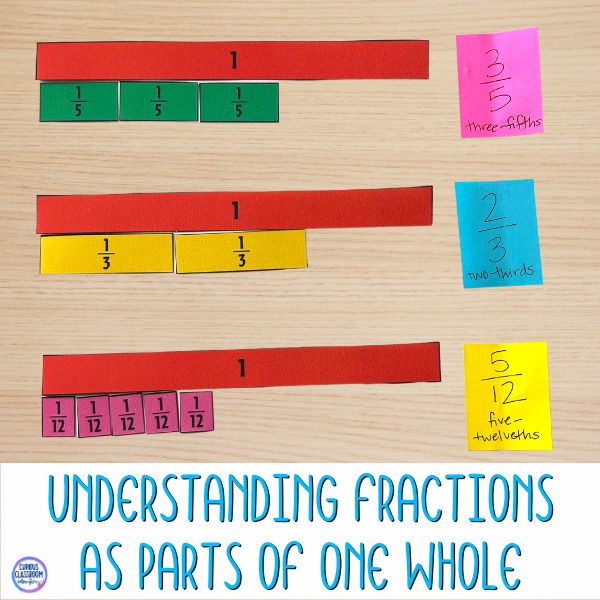
Equivalent Fractions:
How can numbers that look so different be equal to one another? Help your students make sense of this idea by using strips to illustrate the concept of equivalent fractions. Have students build fraction models using fraction strips and look for models that result in equal lengths. They can then see how fractions with different numerators and denominators can still represent the same amount.

Comparing Fractions:
Comparing fractions is a logical extension of finding equivalent fractions. By using fraction strips, students can see how two fractions with different denominators can be compared. Start by creating models of the fractions being compared. Students can then compare the length of each model to easily see which is bigger or smaller in comparison.

Adding and Subtracting Fractions:
Once students grasp the concept of fractions as part of a whole, adding fractions becomes a little more straightforward. Have students start by using fraction strips to visually build a model of the fractions being added. Don’t forget to have them use the 1 whole strip to see when the sum of two fractions is greater than one, resulting in a mixed number.
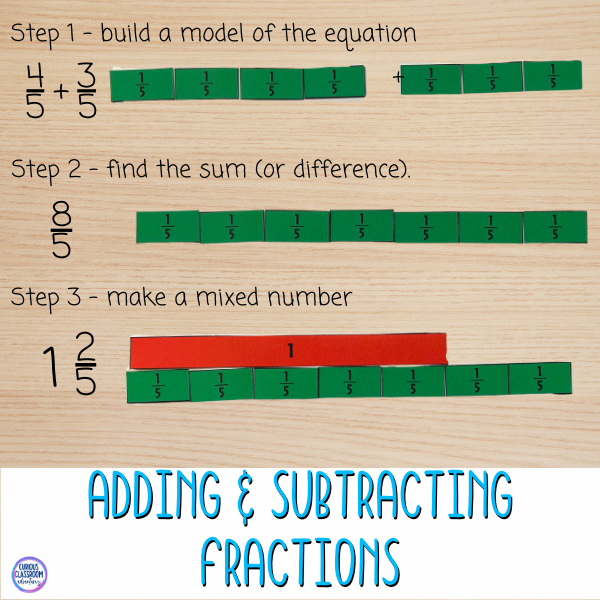
Multiplying Fractions by Whole Numbers:
They can also be extremely useful when it comes to multiplying fractions. The process of building arrays for multiplication is probably already familiar to your students. Now they can apply that same process to multiplying fractions by using fraction strips to create their array. Once they have all the fractional pieces in a multiplication array to find the product, they can rearrange those pieces to make groups equal to one and use the leftover pieces as the fractional part of the mixed number.
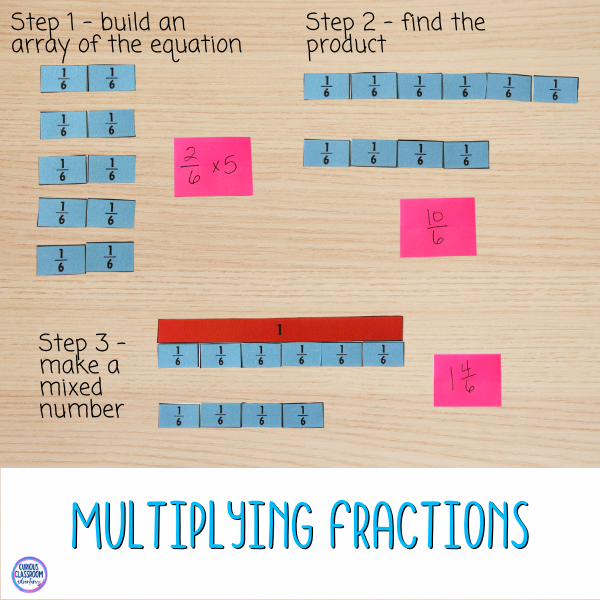
Get a more in-depth look at how I teach fractions in one of these units for 3rd grade fractions or 4th grade fractions.
As you can see, fraction strips are some of the most versatile math manipulatives a teacher can have in their toolkit. They can be used for everything from basic fractions to complex fraction operations, making them an essential component of any math classroom. By using fraction strips to help students understand these concepts, you can make math more engaging and accessible for all students!

